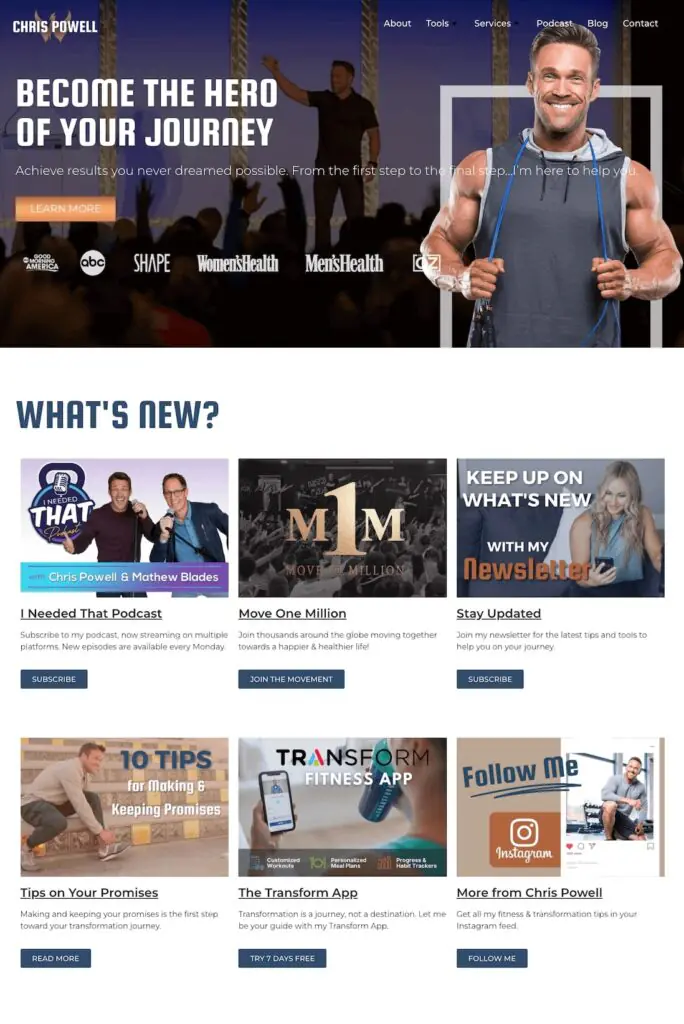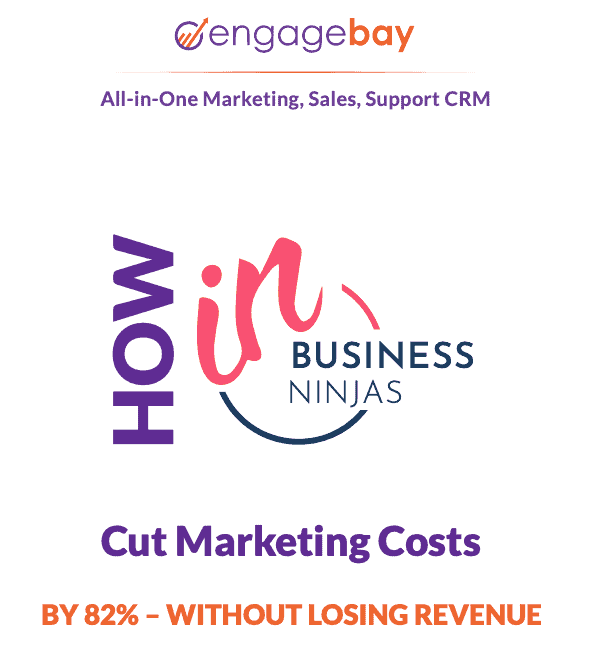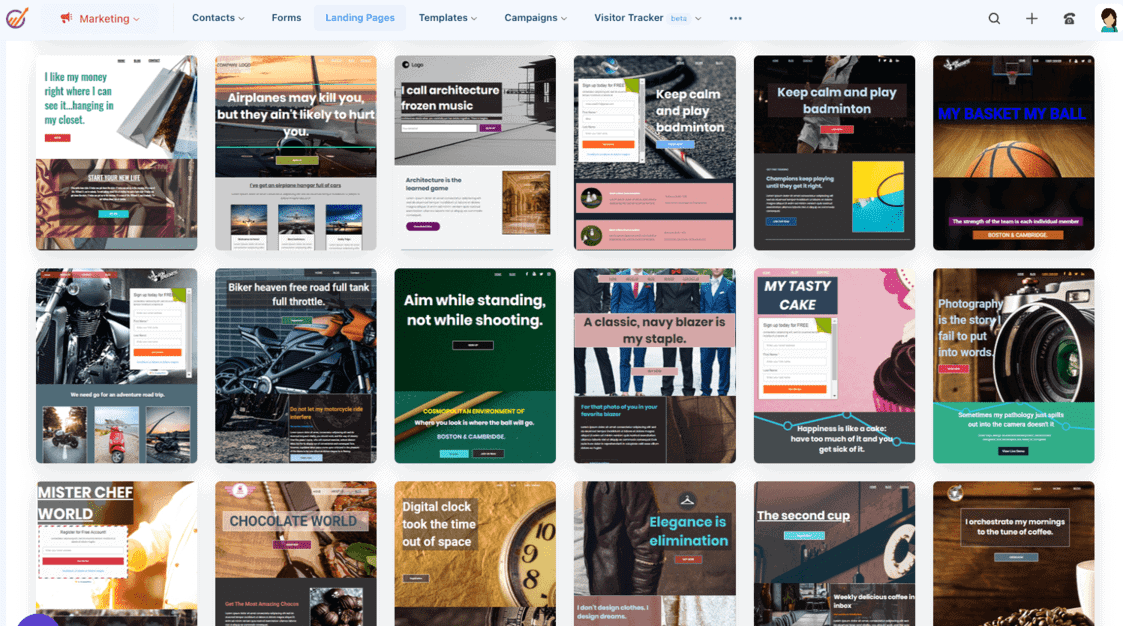Coaches serve the public, aiding in achieving wellness, successfully managing a business, or hitting life milestones. However, no matter the quality of your services, if you don’t market the right way, you’ll fail to reach the right audience sectors, hampering your business.
You always need new leads to keep your coaching business afloat. A good coach marketing strategy is also valuable in converting leads and retaining customers.
In this blog post, we’ll look at 13 of the best coach marketing strategies to improve your game plan.
Table of Contents
13 Coach Marketing Strategies to Achieve Your Business Goals
Let’s dive in!
1. Find your niche
There are thousands of other life and wellness coaches out there; you must niche down to differentiate yourself.
For example, as a life coach, do you specialize in romance and dating or financial management? As a fitness or wellness coach, perhaps your expertise lies in one or two specific areas, like CrossFit or gluten-free diets, respectively.
You’re already off to a good start, but you can often niche down further. For example, as a romance and dating coach, do you help single people find love or work with engaged or married couples?

The more specific you can be with the services you offer, the better. While this means attracting only a specific subset of the market interested in coaching, the leads you get will be more qualified and interested in moving forward.
2. Generate brand awareness
As an entrepreneur-led business, you must have a strong brand. This is another form of coach marketing that will solidify your presence and help you differentiate yourself from thousands of competitors.
So, what goes into a brand? That’s a million-dollar question!
Here are some pointers that will help you in this area:
- Consider what you’re all about. What are your values? What made you want to become a coach? What do you want to inspire others to do through your services? You need a rock-solid understanding of who you are to build a brand successfully.
- Decide which colors will be part of your branding. Select two to three hues that represent your values and marketing goals. There’s a lot of psychology behind colors, but besides what emotions they stand for, you should also consider how complimentary they are. For example, going big and bold with yellow and red might sound good in theory, but it isn’t in practice.
- Create a brand logo. You might wish to hire a professional designer for this unless you’re confident in your design skills. Incorporate the colors you decided to use in your palette. A logo doesn’t have to be particularly complicated; you might use monogrammed initials, your signature, meaningful imagery, or a combination. Having a standout logo can improve brand awareness.
- Determine your brand voice. Are you gentle and encouraging, tough yet caring, or positive and infectious? Whatever traits you best embody as a coach should go into your voice.
- Keep it consistent. Once you’ve cemented your logo, it’s time to update your website, social media, and email signatures. Stick to your brand tone, and if you have other employees handling your digital marketing plan, inform them on how to maintain the tone.
Read also: Inbound Marketing Guide: Definition, Stages, and Strategy
3. Utilize content marketing
No coach marketing strategy is complete without content marketing. You know the saying – content is king! That phrase has stuck around for so long for a reason. Even as technology has swiftly changed, content has continued to reign.
These days, it’s all about digital content marketing, but that’s not all you have at your disposal. Traditional marketing measures are also useful for a coach like you.
Here are the marketing strategies to add to your list:
- Blogging: Continue spreading your expertise by starting a blog where you regularly post information to engage your target audience. Share tips, advice, guest posts, and commentary on industry trends.
- Videos: Although getting on camera is nerve-wracking for some, it’s necessary to grow your business. You can embed videos on your social media posts, in your blog content, and on your website. Creating a popular clip might mean going viral, which will surely attract attention to your coaching business.
- Whitepapers: Depending on your specialty, you might find it appropriate to produce whitepapers about specific topics within your industry. You can offer whitepapers to encourage email list opt-ins on your website.
- eBooks: eBooks exist in the same vein as whitepapers. They’re recommended for more expanded topics or concepts that exceed what a whitepaper should cover. You can sell the eBook to your customers and use individual chapters or portions of chapters as lead magnets.
- Flyers: Get out around town and staple some flyers advertising your coaching services. If you require permits to do this, especially when handing them out, ensure you get the correct permissions before you start.
- Billboards: Although not cheap, slapping your name and face on a billboard around town will surely drive traffic and leads. I especially recommend this form of content marketing for local coaches.
- Podcasts: With podcast listenership in the millions and the number growing all the time, appearing on a podcast is a viable way to promote your coaching services. You can start your own podcast or apply to be featured on another show in your industry or niche.
- Checklists: Produce checklists chock full of coaching tips, like signs you’re ready to date again after divorce or tips for getting over a weight plateau. You can use your checklists to increase opt-ins.
- Webinars: Another excellent avenue for sharing your coaching expertise is through hosting a webinar. You can reveal strategies for better health, happiness, and wellness through the webinar. Webinars are also useful for increasing your earnings, as you can charge for admission, replays, and transcripts.

4. Build a presence on social media
You’re already well on your way with your coach marketing strategy, but might be missing a key component: social media marketing.
Social media is a vast world with billions of users. Determining which platform to start with can be tough.
Look at the channels your audience uses the most. For example, if most of your leads and clients are on Facebook, your coaching business should have a strong presence there. The same goes for Twitter, YouTube, and Instagram.
To help you do that, here are some marketing tips for each social media platform.
- Facebook: Join Facebook Groups and share your expertise in comments, answering people’s questions or addressing their problems. You can even start your own exclusive Facebook group where you post nuggets of information for your clients. Post frequently, sharing your own useful content and reposting other valuable content with credit.
- Instagram: Build a feed of images and videos catered to your audience. This is an especially great platform for wellness and motivational coaches, as you can share slogans and inspirations. Get on Instagram Live periodically, answering questions and sharing tips in real time.
- Pinterest: Start various mood boards or goal boards on Pinterest, sharing them on visual social platforms like Instagram or Facebook. Redirect traffic to your website by uploading original content.
- YouTube: Produce high-quality videos and shorts by strategically using hashtags so you show up higher in search results. Get into a rhythm where you post weekly if you hope to gain traction.
- Twitter: Optimize your Twitter profile, then connect with your audience by asking for feedback or running live polls. Incorporate visual media like videos or images with your text posts and use tweet scheduling to reach your audience. At times, they’re likely to use the platform.
- TikTok: Post short, interesting visual content on TikTok. Try creating your own viral hashtag or getting in on existing trends and putting your own spin on them. Use CTAs in your post description and add relevant links to the post or in your bio.
- LinkedIn: Optimize your LinkedIn profile, utilizing relevant keywords related to your coaching business. Begin posting on the timeline, sharing your own content, and cross-posting other insights your audience would find valuable. Join groups and participate, and again, consider starting your group.
Read also: Interesting Insights From Samsung’s Marketing Strategy
5. Network, network, network
You also have to get out there and rub elbows as you build your coaching business through marketing. Tap into your current network, both online and off, and ask them if they have any opportunities or can send you in the direction of a potential client(s).
Attend industry events, mingling and shaking hands. Let other people know your business exists. That doesn’t mean giving them the hard sell (you know, the classic elevator pitch) right then and there.
Instead, you’re opening your doors wide for clients to come in. You never know who within your network can have a valuable connection, and the only way to find out is to ask.
Read also: 8 Winning Supplement Marketing Strategies for 2024
6. Use case studies and testimonials to your advantage
As you build clients through coach marketing, you will undoubtedly change many lives for the better. Turn your reviews into valuable social proof that will motivate more people to become clients after seeing how much positive change you bring about.

Testimonials are a fantastic springboard. While video testimonials are better at conveying emotion, text-based testimonials are also fine.
Once you have them, take those testimonials and make them into case studies. You don’t have to name names unless your clients allow you to, but detail what the client’s issues were, how they were struggling, and how your services transformed their lives. This is an effective marketing strategy for those just starting out.
Read also: Glamorous Marketing Strategies For Cosmetics Companies
7. Invest in paid advertising
Paid ads, whether on social media or the rest of the world wide web, are one of the most surefire ways to achieve your coach marketing goals.
Here are the types of ads you might consider:
- Email advertising
- Digital signs
- Social media advertising
- Remarketing ads
- Video ads
- Mobile advertising
- Native ads
- Affiliate ads
- Display ads
- Banner ads
- Radio ads
- Television commercials
With so many ad styles, your first goal is to select which one(s) you think best suits your message. For example, banner ads might work if you’re selling a product or service that’s visually appealing, while email ads are great for increasing awareness of your coaching business.
Next, it’s time to segment your audience. You should never create ads that appeal to everyone, as your criteria are too broad to attract the right client segments you want. You will likely have to create variations on the same ad for different segments, but this kind of targeting works.
You must also determine your budget. The money you put into advertising will come back to you in the form of more referrals and clients, but it might take time to happen.
A general rule of thumb is to spend no more than 14 percent of your revenue on digital and traditional advertising. If that sounds like too much, 10 percent is customary.
8. Partner or collaborate with others
Amplifying your marketing message often requires getting others on board. Collaborating with influencers and industry professionals can increase your star power and branding through association. You will also tap into new audiences.
As beneficial as partnerships can be, you can’t choose just anyone as a potential collaborator. While their social media prowess and popularity matter, ensure there’s also an allegiance between your values and theirs.
Too many companies have fallen victim to influencer partnerships that ring hollow. It’s clear that the only reason the company brought the influencer on board is because they’re a big name. These kinds of partnerships can often have the opposite effect, where your audience will ignore it or fail to engage.
Remember that any partnership should be about giving and taking. If they provide a service to you–such as promoting your coaching business and granting you access to their audience–you should give something back when and where you can.
Read also: 11 Dental Marketing Strategies To Implement in 2024
9. Focus on SEO
Of course, marketing efforts can only take you so far. You also need online visibility, and one of the most guaranteed strategies for getting it is mastering search engine optimization.
SEO, for the uninitiated, determines where you land on search results pages, be that the coveted top spot, somewhere on the first page, or all the way on page three.
With more than 90 percent of Google traffic contained to the first page, you risk being invisible if your site ranks lower.
So, how do you rise in the ranks, surpassing even your competitors so you can get the lion’s share of business? Here are the SEO strategies you need to implement.
- Optimize your images, adding meta descriptions and alt tags.
- Improve website loading speed by cutting down on extraneous scripts and compressing images.
- Do keyword research (including local research), and implement those terms into your website copy, like the page titles and headlines. Use the keywords naturally, and don’t spam.
- Win the featured snippet by writing a complete, concise answer in blog content.
- Use internal links, but only relevant links.
- Update old content, adding new information and insights.
- Generate quality backlinks by joining directories, guest posting, and partnering with others.
- Consider an SEO audit.
10. Host a contest or giveaway
You can fold this strategy into your social media plans. A giveaway or contest will resonate with any type of audience because who doesn’t love free stuff? That’s right, everyone does.
However, you need a decent following for a contest to have any type of impact. If you only have an email list of 50 people or 75 social media followers, wait until you beef up your contacts list by a few hundred before you consider launching a contest.
The prize for winning should always be a service related to your coaching. Perhaps you offer a month of free services, a personal 60-minute consultation, or 10 video calls at no charge. You could give away a free copy of your eBook.
If you’ve curated a segmented audience, they will find the prize covetable enough to participate in droves.
Make it easy to enter. For example, a popular format for social media contests is to require a like, follow, and comment to enter. That takes someone all of a minute to do, so it’s fast, easy, and effortless.
You could also require email addresses for entry, which is a smart way of collecting more contacts for your email newsletter (of course, mention they’re consenting to your newsletter by entering the contest to avoid getting sent to the spam filter).
Read also: 14 Low-Cost Local Marketing Ideas That Will Make a Big Impact
11. Redesign your website
Your landing page should match your branding colors and style, with your logo front and center. You should revise the copy, using short- and long-tail keywords, including local keywords.

You should also prioritize website loading speed and a quality user experience with clear navigation.
Your website is the vehicle that will drive a lot of your marketing strategies (and thus results), so if it’s lacking in any way, that could impede the success of your campaign.
12. Use email marketing
I’ve already provided plenty of strategies for increasing the size of your email list, but let me recap here. Hosting a contest or giveaway is one way to do it. You can also use highly targeted lead magnets and opt-in forms.
Once you have a substantial email list, it’s time to reach out. Email marketing aims to move your leads through the sales funnel to conversion. There’s also a nurturing component of email marketing, especially for longer-term clients, that keeps them engaged and eager to buy and refer your coaching services to others.
So, how often should you strive to communicate with your list through email? At least twice a week and up to three times a week.
This is one of those instances where more communication doesn’t necessarily mean better results, at least based on data.
Of course, your audience is unique, so what the data says and what your clients say could be two different things.
You might try gradually ramping up your email send rate and then issuing a survey to see if your audience wants the same frequency, a higher frequency, or fewer emails. You can adjust based on their responses.
Respect their answer, whatever it may be. Incessantly tossing emails into the black hole of cyberspace is an excellent way to get reported for spam. You’ll lose subscribers, and you could tank your sender reputation on top of it.
13. Measure your results
No marketing campaign worth its salt foregoes tracking metrics. How else are you supposed to know whether your coach marketing strategies worked?
Here are some KPIs to begin measuring as your campaign unfolds and through its conclusion:
- Email open rate
- Click-through rate
- List growth rate
- Conversion rate
- Engagement rate
- Ad clicks
- Website traffic
- Lead gen rate
- Net Promoter Score
- Marketing return on investment
- Customer lifetime value
- Cost per acquisition
- SEO ranking
- Bounce rate
- Page views per session
- Referral traffic
- Backlink quality
- Paid traffic
- Organic traffic
- Social media followers
- Overall sales
Read also: 11 Bowling Alley Marketing Strategies for a New Spin
Bottom Line
Coach marketing strategies are the key to forward momentum and growth. Your campaign can’t get underway without identifying and understanding your brand, segmenting your audience, and finding your niche.
Once you’ve gotten those basic fundamentals out of the way, you’re ready to hit the ground running, using social media, email, content, and digital and traditional strategies to leverage your coaching business and grow.
